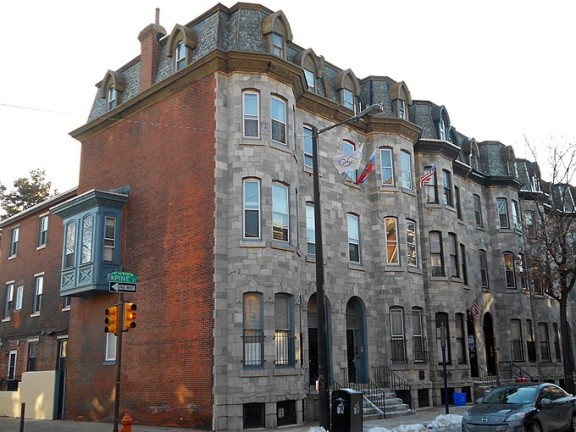Edward D. Cope House

2100 and 2102 Pine Street belong to a row of nine rowhouses that were built about 1870 in the fashionable, mansard-roofed Second Empire style. Their marble facades set them apart from their brick neighbors. In 1876, the already famous paleontologist and geologist Edward Drinker Cope (1840-1897) bought the two houses, living in 2100 and using 2102 as a laboratory and storeroom. Failed investments forced him to sell 2100 and move into 2102 in 1886, and it was here that he died.
Cope was born into a prominent Quaker Philadelphia family, and his fascination with the natural world began in childhood. Educated at the Westtown School, he frequented the Academy of Natural Sciences, and, after just a year at the University of Pennsylvania, he went to Washington to study reptiles with Spencer F. Baird at the Smithsonian. A year later he returned to the University of Pennsylvania to work with Joseph Leidy. He taught for three years at Haverford College and was appointed to the faculty of the University of Pennsylvania in 1889, but his international reputation as a prodigious fossil hunter was based on self-financed excavations--first in New Jersey and then chiefly in Kansas and Wyoming. He identified over 1000 prehistoric species and published more than 1400 scientific articles.
Cope is best known for his role in the infamous "Bone Wars" with one-time friend and rival Othniel Charles Marsh of Yale University. The two men quarreled publicly over the primacy of their discoveries and about their interpretation.
The houses on Pine street were the center for Cope’s research and writing. It was within these walls that he penned many of his scholarly articles and analyzed fossil specimens. This was also a gathering place for the intellectuals of the era, with whom Cope shared ideas and discussed the latest scientific advancements. In 1884, the collections stored here were offered to the Academy of Natural Sciences, with whom Cope had a quarrelsome relationship, but he ultimately sold them to the American Museum of Natural History in New York, which helped to lift that institution to the forefront of American paleontology.